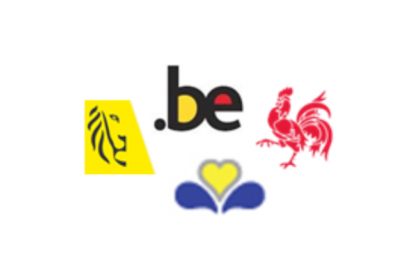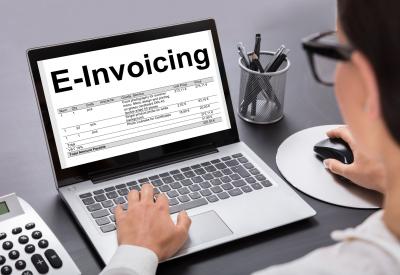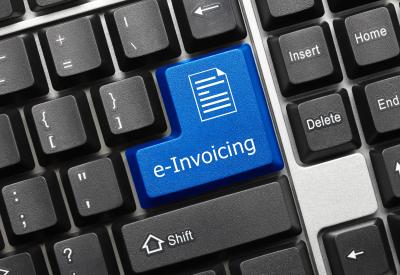For the IT sector, e-invoicing is a very broad area of application... and a market in the making. Today, only 10% of invoices are true electronic invoices. With hybrid invoicing (PDF) or other scanning solutions, the IT sector is developing partial solutions, avoiding the obstacles.
The changing legal framework and the efforts of the public authorities are creating a new strategy. As an IT professional, it’s time to get involved: Develop your invoicing tool, whether existing or new, taking into account the Peppol specifications. Even better: help improve this framework by expressing yourself in this community of enthusiastic professionals...
Why has e-invoicing stagnated for so long?
The Agency for Administrative Simplification (ASA) regularly measures the uptake rate of e-invoicing in Belgium. Whereas the number of PDF invoices increases constantly, the number of structured electronic invoices has stagnated for several years at around 10%.
This inertia results from a combination of obstacles, which we will consider individually.
1. The legal uncertainty
For a long time, the paper invoice was legally more secure than an electronic invoice. With an e-invoice, the risk of not being paid was high, which required correspondents to make specific bilateral agreements. It was only worth the effort when exchanging large volumes of invoices.
As explained in point 4 above on the 5 misconceptions about e-invoicing, the VAT Directive (2010/45/EU) has placed all forms of invoices on an equal footing. Only the authenticity of its origin, the integrity of its content (in case of alterations) and its readability (by the recipient) count. A great step forward!
2. First steps: the predominance of the sector-based model
As mentioned in the article dedicated to business, it was the massive outsourcing of secondary activities of large companies that gave rise to e-invoicing as we moved into the 1990s. This strategy has generated a significant increase in purchases – and therefore, invoices. The electronic data interchange (EDI) has enabled the automation of administrative processing, which has generated significant efficiency gains for these companies.
These first steps have led to a large fragmentation of proposed solutions, each one having been created in response to a specific sector or group of exchanges. For large companies, this fragmentation hasn't really been an issue: 80% of their incoming invoices have been sectoral. It is very different for SMEs and governments, which receive 80% cross-sector invoices. However, these two segments process four times more invoices than the former. The sector-based model can, therefore, be described as an "efficiency trap": despite its advantages, it negatively affects the growth of e-invoicing.
3. Fragmented networks and Value-Added Networks (VANs)
In the early 90s, the internet was still only in its infancy. Connecting machines was a daunting puzzle, with a wide variety of models, high implementation costs, etc.
Combined with EDI, this complexity led to the emergence of multiple Value-Added Network (VANs), operators specialising in connecting correspondents.
In order to guard against the competition, these operators put in place commercial packages (business models) encouraging their clients to attract new trading partners and making rather costly and risky exchanges with third-party solutions. The result: companies whose key business partners use other platforms are forced to subscribe and use them. This complexity and the excessive costs incurred also block the growth of e-invoicing
How can we make e-invoicing mainstream?
Various advances have been made. From a legal perspective, an invoice and an e-invoice are already totally equivalent, provided you can identify the recipient, certify the integrity of the content and ensure legibility for the recipient. Therefore, there is no longer any legal reason to favour paper.
From a technical perspective, it is more subtle. The sector has developed solutions which move things forward. On the other hand, public authorities have taken measures that open up new avenues. Peppol is at the crossroads of these two paths to the mainstreaming of e-invoicing.
1. PDF, the hybrid model
Non-structured electronic invoicing (a PDF), usually sent by email, is a simple and accessible way for everyone to digitise invoices. The seller can easily produce and send it. Most buyers accept this delivery type and format.
However, it has two major drawbacks:
- For the seller: late payments due to the high rate of invoice losses (due to failed e-mail delivery).
- For the purchaser: the lack of automated processing requires him or her to process these invoices manually, which deprives them of most of the savings from e-invoicing.
The growth of PDF usage, tracked since 2010 (driven by the VAT Directive) is, therefore, both good and bad news. It generates savings but prevents the move to a model that is even more efficient. It is, therefore, another 'efficiency trap'.
2. Scanning: costly, but universal
Faced with the stagnation of paper invoices, software publishers and IT service providers have developed a range of solutions for scanning invoices. These solutions convert paper invoices (or PDFs) into structured data, which can be processed.
Here again, there are some negatives:
- these modules are expensive to develop (and therefore to buy), and to use;
- they require a set-up/learning phase;
- they are far from infallible: often, they are used purely for coding, and don't remove the need for manually processing most invoices.
3. XML, UBL: new bases, more accessible syntaxes
EDI technologies were developed before the internet. However, the internet has contributed significantly to the development of alternative technologies, based on the concept of extensible Markup Language or XML. Its most common implementation, HTML or HyperText Markup Language, is one of the principal bases of the world wide web. XML has many other areas of application, which gives this technology a reach and popularity unparalleled with EDI. It is, therefore, another essential key to the accessibility and mainstreaming of e-invoicing.
Instead of EDIFACT, the syntax of EDI, we now use Universal Business Language or UBL, an application of XML enabling the description of 'business' documents, such as invoices. It is a syntax: a game of well-defined "words". Some countries use UN/CEFACT, another XML syntax. However, it is not widespread in Belgium.
4. The European Standard for electronic invoicing: with clear and complete semantics
Since 2017, the European standard for electronic invoicing provides for a cross-sector standard. As long as it is expressed in this format, any company or authority is capable of reading any invoice from any other company or institution.
Once the IT sector has adopted this standard, it is reasonable to expect that outbound and inbound invoicing software will integrate it into their processing, and thus allow e-invoicing to become more widespread.
5. Peppol
Since 2012, the Peppol framework has provided a series of rules of play thanks to which all invoicing software can work together through the network of networks made up of the VAN sector (in the meantime renamed "service providers").
In 2012, Peppol organised cross-sector exchanges by referring to a format defined by a small working group (CENBII). Not having the strength of a standard, this precursor format was naturally replaced by the European Standard, starting in 2019.
Software that complies with the terms of the PEPPOL framework, therefore, allows companies and institutions that use them to exchange invoices with any business partner. The Peppol framework is, therefore, an assurance for software and information service providers to overcome the obstacles of the past which hindered exchanges between the platforms.
... and as its scope is much wider than Belgium, European exchanges are catered for perfectly! The market is thus vast.
6. E-invoicing directive
Finally, the 2014/55/EU Directive requires all European contracting authorities to receive e-invoices in accordance with the European Standard. In some ways, it offers the IT sector a market interested in quality cross-sector e-invoicing solutions. In return, a market for issuing such e-invoicing is also available to the IT sector, and by extension, the entire B2B market is put within its reach.
How can you help the growth of e-invoicing?
The ball is in your court! Numerous solutions exist, but this is still far from sufficient for the enormous equipment needs of our companies and institutions. Advances, and therefore investments are needed. The market is large and diverse, and efficiency is on the table. So many guarantees for the sector.
To start with, why not join the Peppol community? Because Peppol is not just about directives. It is also, and above all, a community, where the whole IT sector and its customers come together with e-invoicing experts. Leading players such as IBM, SAP, GS1, Basware, Edicom and many others are already participating. Each week, new players join the community, enriching the debates that take place there. These debates are widely relayed on the peppol.eu website and on social media.
For any company developing software and/or e-invoicing services, taking an interest in and participating in the work of the Peppol community is a common-sense approach. It puts essential knowledge within reach. It helps contribute to the overall efficiency of exchanges. It also brings together leading experts in the domain. Finally, it enables the alignment of software and services with the Peppol framework, and thus offers the market much more compatible solutions. To participate, you just need to become a member of AISBL OpenPeppol, the organisation that provides global coordination within the community.







































